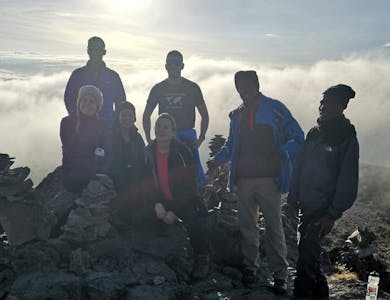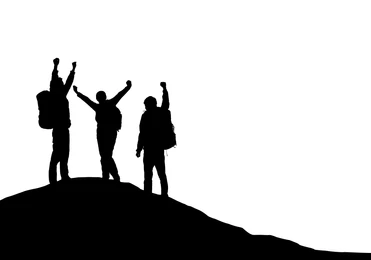Training Guide for the Lemosho Trek on Kilimanjaro
How to Prepare for Success

Training Guide for the Lemosho Trek on Kilimanjaro: How to Prepare for Success
The Lemosho route on Mount Kilimanjaro is widely considered one of the most scenic and rewarding treks to Africa’s highest peak. However, at 5,895 metres (19,341 feet), reaching the summit requires more than just enthusiasm—it demands physical preparation. If you have an average fitness level and are looking to complete the Lemosho trek, this guide will help you train effectively and safely for the adventure of a lifetime.
Understanding the Physical Demands of the Lemosho Route
The Lemosho route is an 8-day trek that provides a good balance between challenge and acclimatisation, increasing the chances of reaching the summit successfully. Expect:
Long days of hiking: Up to 6-8 hours per day, with the summit push requiring a gruelling 10-14 hours.
Varied terrain: From lush rainforests to rocky alpine landscapes and icy summit slopes.
High altitude: The biggest challenge is the reduced oxygen levels at high elevations, making acclimatisation and endurance key.
How Fit Do You Need to Be?
You don’t need to be an elite athlete to complete the Lemosho route, but a good level of cardiovascular endurance, leg strength, and mental resilience is crucial. The goal is to build stamina, improve muscular endurance, and condition your body for multiple consecutive days of trekking.
Training Plan for the Lemosho Route
To ensure you are adequately prepared, start training at least 12 weeks before your trek. Here’s a structured approach to help you build strength, endurance, and resilience:
1. Cardiovascular Training (3-4 Days Per Week)
Cardio exercises will improve your lung capacity and overall stamina, which is vital for hiking at high altitudes.
Recommended Activities:
Hiking with a loaded backpack: Simulate the trek by walking on trails or hills with a weighted backpack (5-10kg).
Stair climbing: Strengthens your legs and mimics the uphill climbs on Kilimanjaro.
Running or cycling: Aim for 30-60 minutes at a moderate intensity to build endurance.
Swimming: Helps improve lung capacity and stamina with minimal impact on joints.
Training Goal:
Start with 3 sessions per week and gradually increase to 4-5 sessions as your fitness improves.
Incorporate at least one long hike per week on uneven terrain to prepare for trekking conditions.
2. Strength Training (2-3 Days Per Week)
Building strength in your legs, core, and upper body will help you maintain stability and endurance on long hikes.
Key Exercises:
Leg-focused workouts: Squats, lunges, step-ups, and calf raises.
Core stability: Planks, Russian twists, and leg raises for balance and posture.
Upper body endurance: Push-ups and shoulder presses (useful for carrying your pack).
Resistance training: Using weights or resistance bands to improve muscular endurance.
Training Goal:
2-3 strength training sessions per week focusing on full-body workouts.
Use moderate weights and high repetitions to build endurance rather than bulk muscle.
3. Flexibility and Mobility (2-3 Days Per Week)
Flexibility reduces the risk of injury and improves overall movement efficiency.
Recommended Activities:
Yoga: Helps with balance, flexibility, and breathing control.
Stretching: Focus on hamstrings, calves, hip flexors, and lower back.
Foam rolling: Aids muscle recovery and prevents stiffness.
4. Altitude Acclimatisation & Mental Preparation
Since altitude sickness is a major challenge, acclimatisation is essential.
Tips:
Train at elevation if possible: If you live near mountains, hike at higher altitudes to adapt.
Use a stair-climber or elevation mask: These simulate lower oxygen levels.
Pace yourself: Practice hiking at a slow, steady pace with controlled breathing.
Mental resilience: Long treks require patience and mental toughness—visualise your summit success and embrace the challenge.
Additional Preparation Tips
1. Test Your Gear
Wear the boots, backpack, and clothing you plan to use on Kilimanjaro during training to ensure they are comfortable and broken in.
2. Nutrition and Hydration
Increase protein intake to aid muscle recovery.
Stay hydrated before, during, and after hikes.
Practice eating small meals/snacks while exercising, as this will mimic the trek’s demands.
3. Gradual Progression
Don’t overtrain or push too hard too soon. Increase intensity gradually to avoid injury and ensure consistent progress.
Final Thoughts: Commit to the Journey
Training for the Lemosho route on Kilimanjaro requires dedication, but the reward of standing on Uhuru Peak is worth every step. With a solid mix of cardiovascular fitness, strength, endurance, and mental preparation, you’ll be ready to conquer Africa’s highest mountain.
Are you ready to take on the challenge? Start your journey today and make your dream of reaching the Roof of Africa a reality!
Visit The Adventure People Kilimanjaro Treks.




